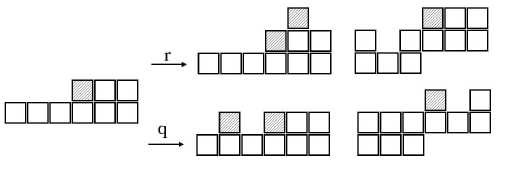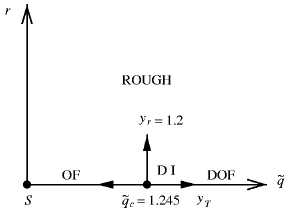ABSORBING STATE TYPE DYNAMIC PREROUGHENING IN SURFACE GROWTH.
|
Jae Dong Noh, Hyunggyu Park, and Marcel den Nijs, Phys. Rev. E, 59 , 194-204 (1999). |
absorbing state dynamics:
Absorbing phase transitions take place in dynamic processes with a trap, out of which the system can not escape, a non-fluctuating ground state.For example, in epidemic processes it is the state where everybody is healthy and the decease has died out. The epidemy propagates by direct contact. When the infection probability at contact, p, is small, the decease dies out. Beyond a critical point, the so-called percolation threshold pc, it stays alive forever and keeps recurring throughout the population (assuming the immunization period is short). The scaling properties at the percolation threshold are universal. They do not depend on the details of the infection process, and the context of the process, e.g., forest fires or surface catalysis. The typical width of the infected region l and the life time t of the decease diverge at pc as t~lz with z the dynamic exponent. Critical exponents like z only depend on the spatial dimension and whether there is only one single trap or two by symmetry equivalent ones. The first type of process is known as directed percolation and the latter as directed Ising. |

Dynamic rule for a one dimensional model with a dynamic disorderd flat phase
and a Directed Ising type dynamic preroughening transition
absorbing states in surface growth:
|
 |
home page of Marcel den Nijs